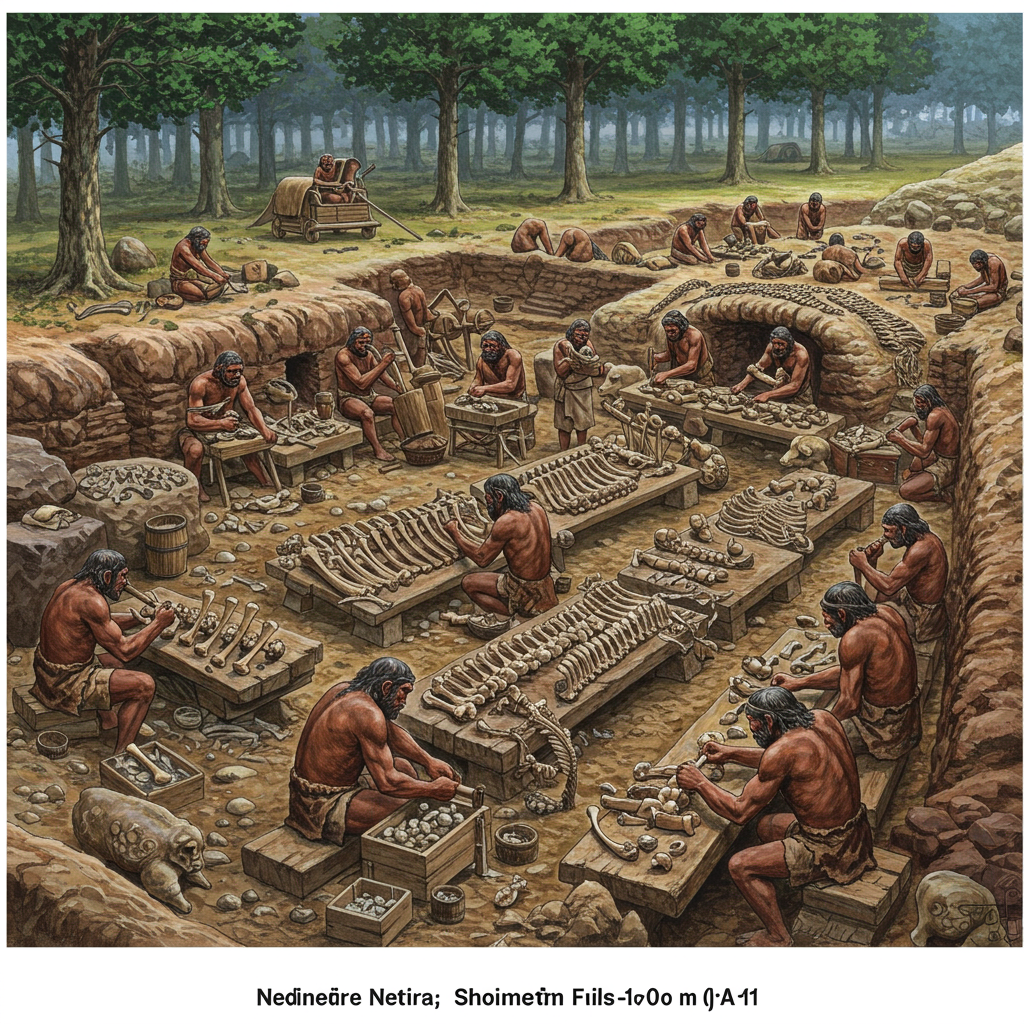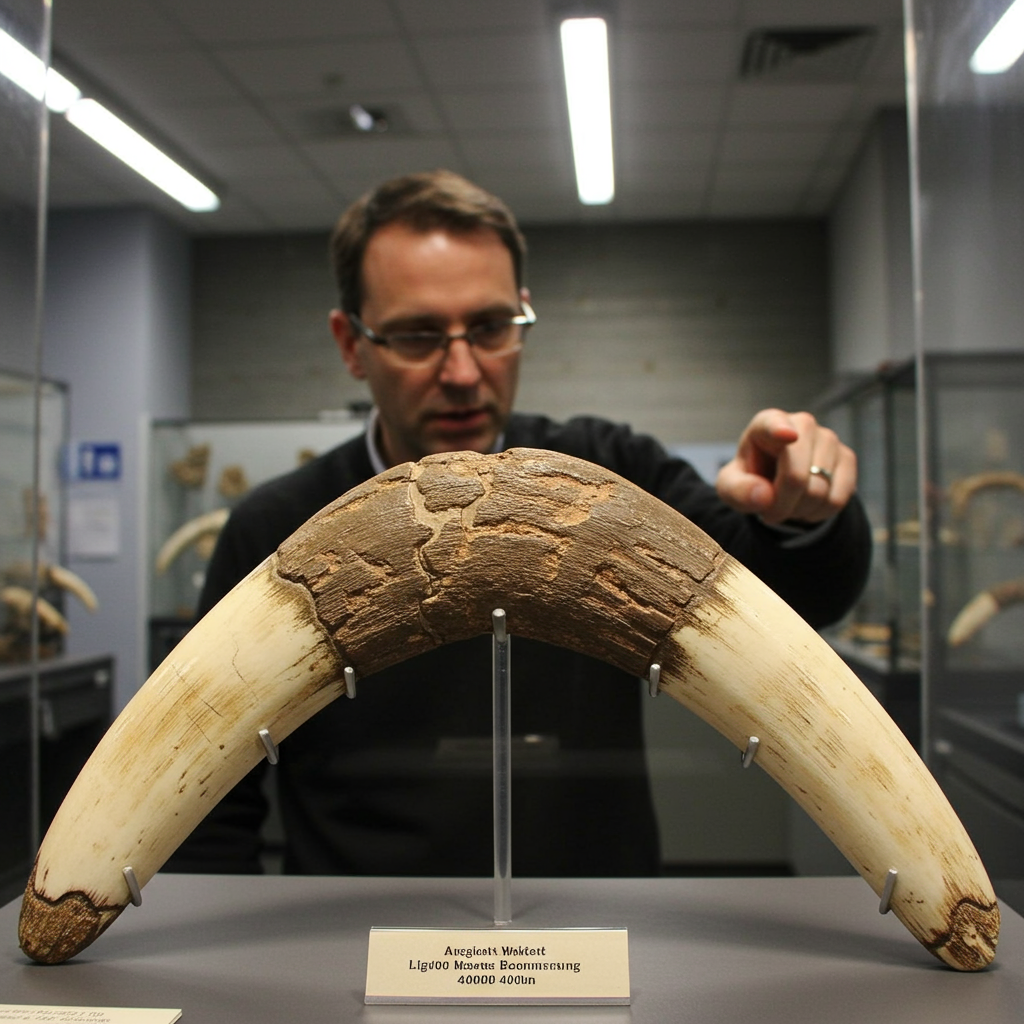Unlocking the secrets of ancient human life often reveals surprising sophistication. New findings show neanderthals living over 125,000 years ago in what is now Germany engaged in complex food processing. They weren’t just hunting; they were extracting vital nutrients from animal bones on an industrial scale. This discovery challenges long-held beliefs about our extinct relatives. It paints a picture of intelligent, forward-thinking hominins managing resources with remarkable skill.
Unearthing an Ancient Nutritional Secret
Archaeological investigations at the Neumark-Nord site in Germany uncovered something extraordinary. Researchers found fragmented remains from a massive number of large mammals. Evidence points to over 170 animals, including horses and deer. Their bones were not simply discarded after butchery. Instead, they showed signs of intensive processing.
This site appears to have been a dedicated workshop. Here, Neanderthals meticulously broke down animal bones. The goal was clear: extract the calorie-dense fat. This intensive process required significant time and effort. It demonstrates a sophisticated understanding of nutrition and resource utilization.
Why Bone grease Was Essential for Survival
Modern diets often focus on muscle meat. However, ancient hunter-gatherers had different nutritional needs. According to study author Wil Roebroeks, there’s a limit to how much protein humans can healthily consume daily. This limit is around 300 grams. Meeting daily energy requirements demanded other calorie sources.
Fats and carbohydrates were crucial components of prehistoric diets. Bone grease provided a concentrated source of energy. It offered essential lipids necessary for survival in challenging environments. Accessing this hidden fat required specific techniques.
Sophisticated Processing: Beyond Muscle Meat
For many years, scientists knew Homo sapiens processed bones for grease. Upper Paleolithic humans heavily relied on this technique. They would pound grease-rich bones into small pieces. Then, they likely heated these fragments in water. The fat would separate and could be skimmed off. This practice was previously dated to no earlier than about 28,000 years ago. That timeframe is well after Neanderthals disappeared from the fossil record.
The Neumark-Nord discovery dramatically shifts this timeline. It provides the earliest definitive proof of large-scale bone grease rendering. This evidence predates the previously known Homo sapiens practice by roughly 100,000 years. The sheer volume of fragmented bones at the German site is compelling. It points to a specialized activity area. This wasn’t just casual bone breaking.
The researchers found tens of thousands of small bone fragments. These came primarily from fat-rich bones. This substantial investment of labor highlights the value Neanderthals placed on these lipids. It shows they were capable of complex, multi-step resource processing. This level of planning was previously thought to be unique to early modern humans during this period.
Challenging Assumptions About Neanderthal Life
The discovery of this ancient “fat factory” has significant implications. It challenges the idea that Neanderthals were simple “immediate-return” societies. This view suggests they focused solely on immediate needs. It implied they did little or no planning for the future.
Intensively processing bones for grease required foresight. It wasn’t a quick task yielding immediate results. It involved collecting bones, transporting them, and spending considerable time breaking them down. This suggests a capacity for delayed gratification. It also implies strategic resource management. The large cache of bones might have been gathered over time. They could have been stored before being processed in one large batch. This points strongly to forward planning.
This finding aligns with other evidence of Neanderthal ingenuity. For instance, they produced complex adhesives like birch bark pitch. This required sophisticated temperature control and technical skill. The ability to render bone grease fits neatly into this emerging picture. It shows Neanderthals possessed advanced cognitive and behavioral capabilities. They were far more complex than the brutish image sometimes portrayed. They understood their environment. They developed technologies to exploit its resources effectively.
What Did This Grease Taste Like? (Or How Was it Used?)
While the process is becoming clearer, exactly how Neanderthals used the rendered grease remains somewhat speculative. Scientists suggest several possibilities. The calorie-rich grease could have been stored. Perhaps it was dried for later use. Another possibility is that it was added to other foods. Imagine it stirred into vegetable stews. This would have significantly boosted the nutritional value of their meals. Such practices would have been crucial for survival through lean periods.
Frequently Asked Questions
What is bone grease rendering and why was it important for Neanderthals?
Bone grease rendering is a process used to extract fat from animal bones. It involves breaking bones into small fragments and often heating them. This releases the fat (grease), which is then collected. For Neanderthals and other ancient hunter-gatherers, this was vital. Muscle meat alone couldn’t provide enough daily energy due to protein limits. Bone grease was a concentrated source of essential lipids. It provided the necessary calories and nutrients for survival, especially in cold environments.
Where was this ancient Neanderthal ‘fat factory’ discovered?
The discovery of this 125,000-year-old Neanderthal bone grease processing site was made in Germany. The specific location is the Neumark-Nord archaeological site. Researchers found the fragmented remains of approximately 172 large mammals there. The scale and nature of the bone processing activity led scientists to describe the site as a dedicated “fat factory.” This location provides the earliest known evidence of such intensive bone rendering.
How does the discovery of bone grease rendering change our view of Neanderthal capabilities?
Finding evidence of large-scale bone grease rendering at Neumark-Nord significantly enhances our understanding of Neanderthals. It demonstrates they were not just opportunistic hunters focused only on immediate needs. The process required complex planning, resource collection, and significant time investment. This suggests capabilities for delayed gratification and forward thinking previously attributed only to early Homo sapiens much later. It shows Neanderthals were capable of sophisticated resource management and possessed advanced cognitive skills.
Conclusion
The Neumark-Nord “fat factory” offers compelling evidence. It confirms Neanderthals living 125,000 years ago were highly capable. They developed sophisticated techniques to maximize nutritional intake. Processing bone grease required planning, skill, and effort. This discovery solidifies the view of Neanderthals as complex, intelligent hominins. They were masters of their environment. They utilized resources in innovative ways to ensure their survival. This pushes back the timeline for complex food processing behaviors. It places Neanderthals alongside, or even preceding, early modern humans in technological ingenuity.




